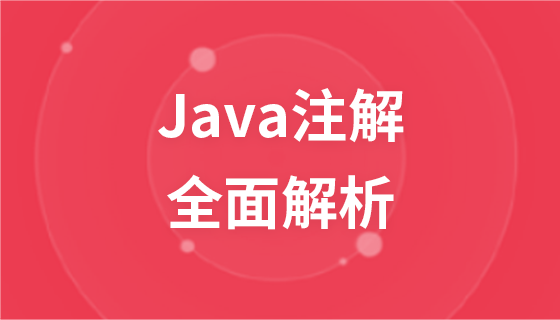java实现定时任务的方式:1、使用Java自带的“java.util.Timer”类,这个类允许你调度一个“java.util.TimerTask”任务;2、使用Quartz;3、使用Spring3.0自带的task。

本教程操作环境:windows7系统、java8版、DELL G3电脑。
近日项目开发中需要执行一些定时任务,比如需要在每天凌晨时候,分析一次前一天的日志信息,借此机会整理了一下定时任务的几种实现方式,由于项目采用spring框架,所以我都将结合spring框架来介绍。
1、Java自带的java.util.Timer类,这个类允许你调度一个java.util.TimerTask任务。使用这种方式可以让你的程序按照某一个频度执行,但不能在指定时间运行。一般用的较少,这篇文章将不做详细介绍。
2、使用Quartz,这是一个功能比较强大的的调度器,可以让你的程序在指定时间执行,也可以按照某一个频度执行,配置起来稍显复杂,稍后会详细介绍。
立即学习“Java免费学习笔记(深入)”;
3、Spring3.0以后自带的task,可以将它看成一个轻量级的Quartz,而且使用起来比Quartz简单许多,稍后会介绍。
1、作业类需要继承自特定的作业类基类,如Quartz中需要继承自org.springframework.scheduling.quartz.QuartzJobBean;java.util.Timer中需要继承自java.util.TimerTask。
2、作业类即普通的java类,不需要继承自任何基类。
注:个人推荐使用第二种方式,因为这样所以的类都是普通类,不需要事先区别对待。
1、每隔指定时间则触发一次,在Quartz中对应的触发器为:org.springframework.scheduling.quartz.SimpleTriggerBean
2、每到指定时间则触发一次,在Quartz中对应的调度器为:org.springframework.scheduling.quartz.CronTriggerBean
注:并非每种任务都可以使用这两种触发器,如java.util.TimerTask任务就只能使用第一种。Quartz和spring task都可以支持这两种触发条件。
详细介绍每种任务调度工具的使用方式,包括Quartz和spring task两种。
第一步:定义作业类
import org.quartz.JobExecutionContext;
import org.quartz.JobExecutionException;
import org.springframework.scheduling.quartz.QuartzJobBean;
public class Job1 extends QuartzJobBean {
private int timeout;
private static int i = 0;
//调度工厂实例化后,经过timeout时间开始执行调度
public void setTimeout(int timeout) {
this.timeout = timeout;
}
/**
* 要调度的具体任务
*/
@Override
protected void executeInternal(JobExecutionContext context)
throws JobExecutionException {
System.out.println("定时任务执行中…");
}
}第二步:spring配置文件中配置作业类JobDetailBean
<bean name="job1" class="org.springframework.scheduling.quartz.JobDetailBean"> <property name="jobClass" value="com.gy.Job1" /> <property name="jobDataAsMap"> <map> <entry key="timeout" value="0" /> </map> </property> </bean>
说明:org.springframework.scheduling.quartz.JobDetailBean有两个属性,jobClass属性即我们在java代码中定义的任务类,jobDataAsMap属性即该任务类中需要注入的属性值。
第三步:配置作业调度的触发方式(触发器)
Quartz的作业触发器有两种,分别是
org.springframework.scheduling.quartz.SimpleTriggerBean
org.springframework.scheduling.quartz.CronTriggerBean
第一种SimpleTriggerBean,只支持按照一定频度调用任务,如每隔30分钟运行一次。
配置方式如下:
<bean id="simpleTrigger" class="org.springframework.scheduling.quartz.SimpleTriggerBean"> <property name="jobDetail" ref="job1" /> <property name="startDelay" value="0" /><!-- 调度工厂实例化后,经过0秒开始执行调度 --> <property name="repeatInterval" value="2000" /><!-- 每2秒调度一次 --> </bean>
第二种CronTriggerBean,支持到指定时间运行一次,如每天12:00运行一次等。
<bean id="cronTrigger" class="org.springframework.scheduling.quartz.CronTriggerBean"> <property name="jobDetail" ref="job1" /> <!—每天12:00运行一次 --> <property name="cronExpression" value="0 0 12 * * ?" /> </bean>
关于cronExpression表达式的语法参见附录。
第四步:配置调度工厂
<bean class="org.springframework.scheduling.quartz.SchedulerFactoryBean"> <property name="triggers"> <list> <ref bean="cronTrigger" /> </list> </property> </bean>
说明:该参数指定的就是之前配置的触发器的名字。
第五步:启动你的应用即可,即将工程部署至tomcat或其他容器。
Spring能够支持这种方式,归功于两个类:
org.springframework.scheduling.timer.MethodInvokingTimerTaskFactoryBean
org.springframework.scheduling.quartz.MethodInvokingJobDetailFactoryBean
这两个类分别对应spring支持的两种实现任务调度的方式,即前文提到到java自带的timer task方式和Quartz方式。这里我只写MethodInvokingJobDetailFactoryBean的用法,使用该类的好处是,我们的任务类不再需要继承自任何类,而是普通的pojo。
第一步:编写任务类
public class Job2 {
public void doJob2() {
System.out.println("不继承QuartzJobBean方式-调度进行中...");
}
}可以看出,这就是一个普通的类,并且有一个方法。
第二步:配置作业类
<bean id="job2" class="org.springframework.scheduling.quartz.MethodInvokingJobDetailFactoryBean"> <property name="targetObject"> <bean class="com.gy.Job2" /> </property> <property name="targetMethod" value="doJob2" /> <property name="concurrent" value="false" /><!-- 作业不并发调度 --> </bean>
说明:这一步是关键步骤,声明一个MethodInvokingJobDetailFactoryBean,有两个关键属性:targetObject指定任务类,targetMethod指定运行的方法。往下的步骤就与方法一相同了,为了完整,同样贴出。
第三步:配置作业调度的触发方式(触发器)
Quartz的作业触发器有两种,分别是
org.springframework.scheduling.quartz.SimpleTriggerBean
org.springframework.scheduling.quartz.CronTriggerBean
第一种SimpleTriggerBean,只支持按照一定频度调用任务,如每隔30分钟运行一次。
配置方式如下:
<bean id="simpleTrigger" class="org.springframework.scheduling.quartz.SimpleTriggerBean"> <property name="jobDetail" ref="job2" /> <property name="startDelay" value="0" /><!-- 调度工厂实例化后,经过0秒开始执行调度 --> <property name="repeatInterval" value="2000" /><!-- 每2秒调度一次 --> </bean>
第二种CronTriggerBean,支持到指定时间运行一次,如每天12:00运行一次等。
<bean id="cronTrigger" class="org.springframework.scheduling.quartz.CronTriggerBean"> <property name="jobDetail" ref="job2" /> <!—每天12:00运行一次 --> <property name="cronExpression" value="0 0 12 * * ?" /> </bean>
以上两种方式根据实际情况任选一种即可
第四步:配置调度工厂
<bean class="org.springframework.scheduling.quartz.SchedulerFactoryBean"> <property name="triggers"> <list> <ref bean="cronTrigger" /> </list> </property> </bean>
说明:该参数指定的就是之前配置的触发器的名字。
第五步:启动你的应用即可,即将工程部署至tomcat或其他容器。
到此,spring中Quartz的基本配置就介绍完了,当然了,使用之前,要导入相应的spring的包与Quartz的包,这些就不消多说了。
其实可以看出Quartz的配置看上去还是挺复杂的,没有办法,因为Quartz其实是个重量级的工具,如果我们只是想简单的执行几个简单的定时任务,有没有更简单的工具,有!
上节介绍了在Spring 中使用Quartz,本文介绍Spring3.0以后自主开发的定时任务工具,spring task,可以将它比作一个轻量级的Quartz,而且使用起来很简单,除spring相关的包外不需要额外的包,而且支持注解和配置文件两种
形式,下面将分别介绍这两种方式。
第一步:编写作业类
即普通的pojo,如下:
import org.springframework.stereotype.Service;
@Service
public class TaskJob {
5 public void job1() {
System.out.println(“任务进行中。。。”);
}
}第二步:在spring配置文件头中添加命名空间及描述
<beans xmlns="http://www.springframework.org/schema/beans"
xmlns:task="http://www.springframework.org/schema/task"
xsi:schemaLocation="http://www.springframework.org/schema/task http://www.springframework.org/schema/task/spring-task-3.0.xsd">第三步:spring配置文件中设置具体的任务
<task:scheduled-tasks>
<task:scheduled ref="taskJob" method="job1" cron="0 * * * * ?"/>
</task:scheduled-tasks>
<context:component-scan base-package=" com.gy.mytask " />说明:ref参数指定的即任务类,method指定的即需要运行的方法,cron及cronExpression表达式,具体写法这里不介绍了,详情见上篇文章附录。
到这里配置就完成了,是不是很简单。
也许我们不想每写一个任务类还要在xml文件中配置下,我们可以使用注解@Scheduled,我们看看源文件中该注解的定义:
@Target({java.lang.annotation.ElementType.METHOD, java.lang.annotation.ElementType.ANNOTATION_TYPE})
@Retention(RetentionPolicy.RUNTIME)
@Documented
public @interface Scheduled
{
public abstract String cron();
public abstract long fixedDelay();
public abstract long fixedRate();
}可以看出该注解有三个方法或者叫参数,分别表示的意思是:
cron:指定cron表达式
fixedDelay:官方文档解释:An interval-based trigger where the interval is measured from the completion time of the previous task. The time unit value is measured in milliseconds.即表示从上一个任务完成开始到下一个任务开始的间隔,单位是毫秒。
fixedRate:官方文档解释:An interval-based trigger where the interval is measured from the start time of the previous task. The time unit value is measured in milliseconds.即从上一个任务开始到下一个任务开始的间隔,单位是毫秒。
下面我来配置一下。
第一步:编写pojo
import org.springframework.scheduling.annotation.Scheduled;
import org.springframework.stereotype.Component;
@Component(“taskJob”)
public class TaskJob {
@Scheduled(cron = "0 0 3 * * ?")
public void job1() {
System.out.println(“任务进行中。。。”);
}
}第二步:添加task相关的配置:
<?xml version="1.0" encoding="UTF-8"?>
<beans xmlns="http://www.springframework.org/schema/beans"
xmlns:xsi="http://www.w3.org/2001/XMLSchema-instance" xmlns:aop="http://www.springframework.org/schema/aop"
xmlns:context="http://www.springframework.org/schema/context"
xmlns:tx="http://www.springframework.org/schema/tx"
xmlns:task="http://www.springframework.org/schema/task"
xsi:schemaLocation="
http://www.springframework.org/schema/beans http://www.springframework.org/schema/beans/spring-beans-3.0.xsd
http://www.springframework.org/schema/aop http://www.springframework.org/schema/aop/spring-aop-3.0.xsd
http://www.springframework.org/schema/context
http://www.springframework.org/schema/jdbc/spring-jdbc-3.0.xsd
http://www.springframework.org/schema/tx http://www.springframework.org/schema/tx/spring-tx-3.0.xsd
http://www.springframework.org/schema/task http://www.springframework.org/schema/task/spring-task-3.0.xsd"
default-lazy-init="false">
<context:annotation-config />
<!—spring扫描注解的配置 -->
<context:component-scan base-package="com.gy.mytask" />
<!—开启这个配置,spring才能识别@Scheduled注解 -->
<task:annotation-driven scheduler="qbScheduler" mode="proxy"/>
<task:scheduler id="qbScheduler" pool-size="10"/>说明:理论上只需要加上
Ok配置完毕,当然spring task还有很多参数,我就不一一解释了,具体参考xsd文档http://www.springframework.org/schema/task/spring-task-3.0.xsd。
更多编程相关知识,请访问:编程视频!!
以上就是java定时任务实现的几种方式是什么的详细内容,更多请关注php中文网其它相关文章!

java怎么学习?java怎么入门?java在哪学?java怎么学才快?不用担心,这里为大家提供了java速学教程(入门到精通),有需要的小伙伴保存下载就能学习啦!




Copyright 2014-2025 //m.sbmmt.com/ All Rights Reserved | php.cn | 湘ICP备2023035733号